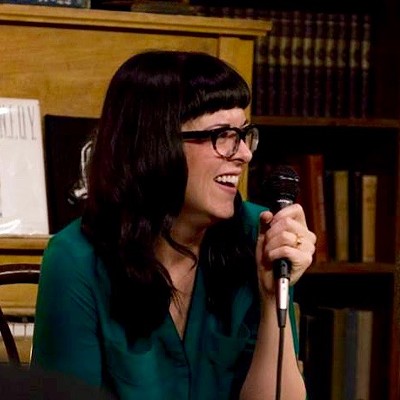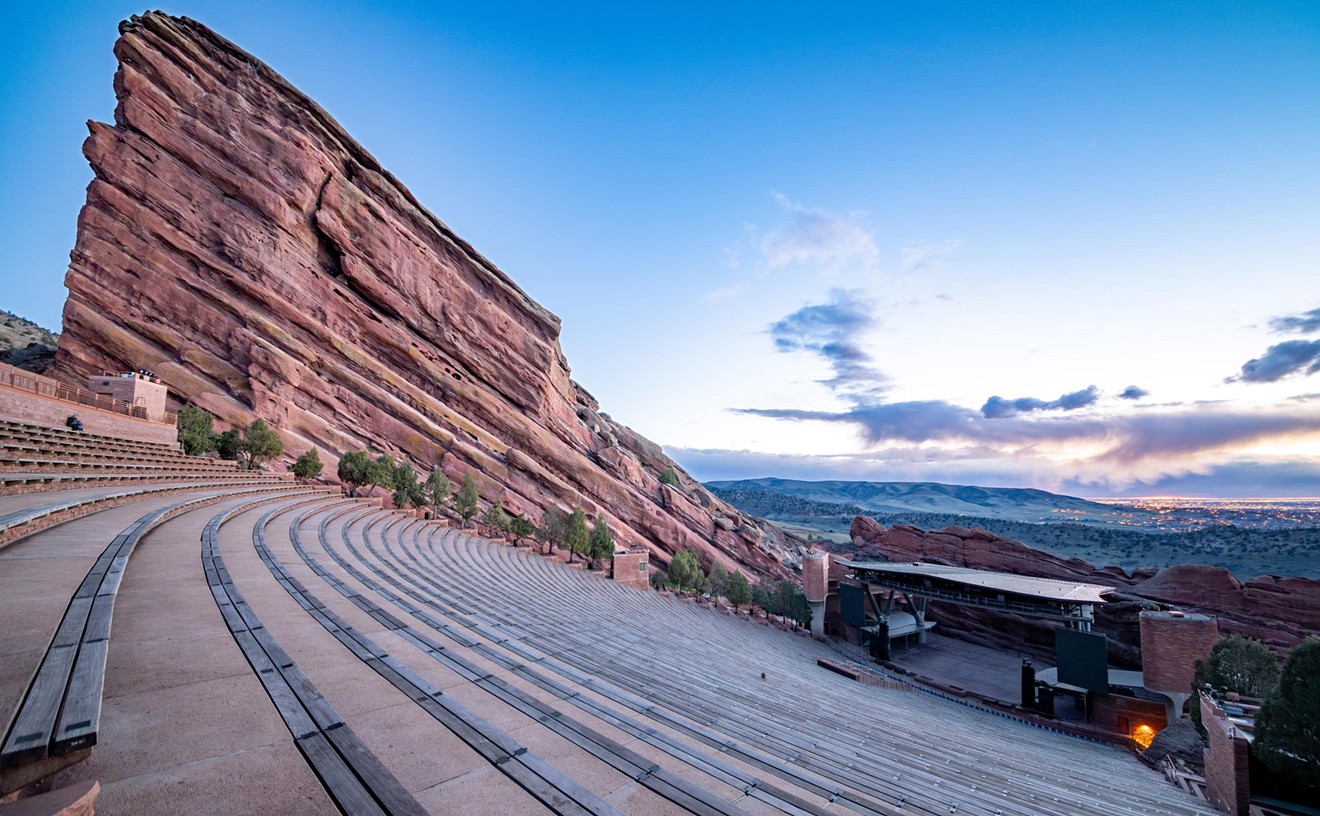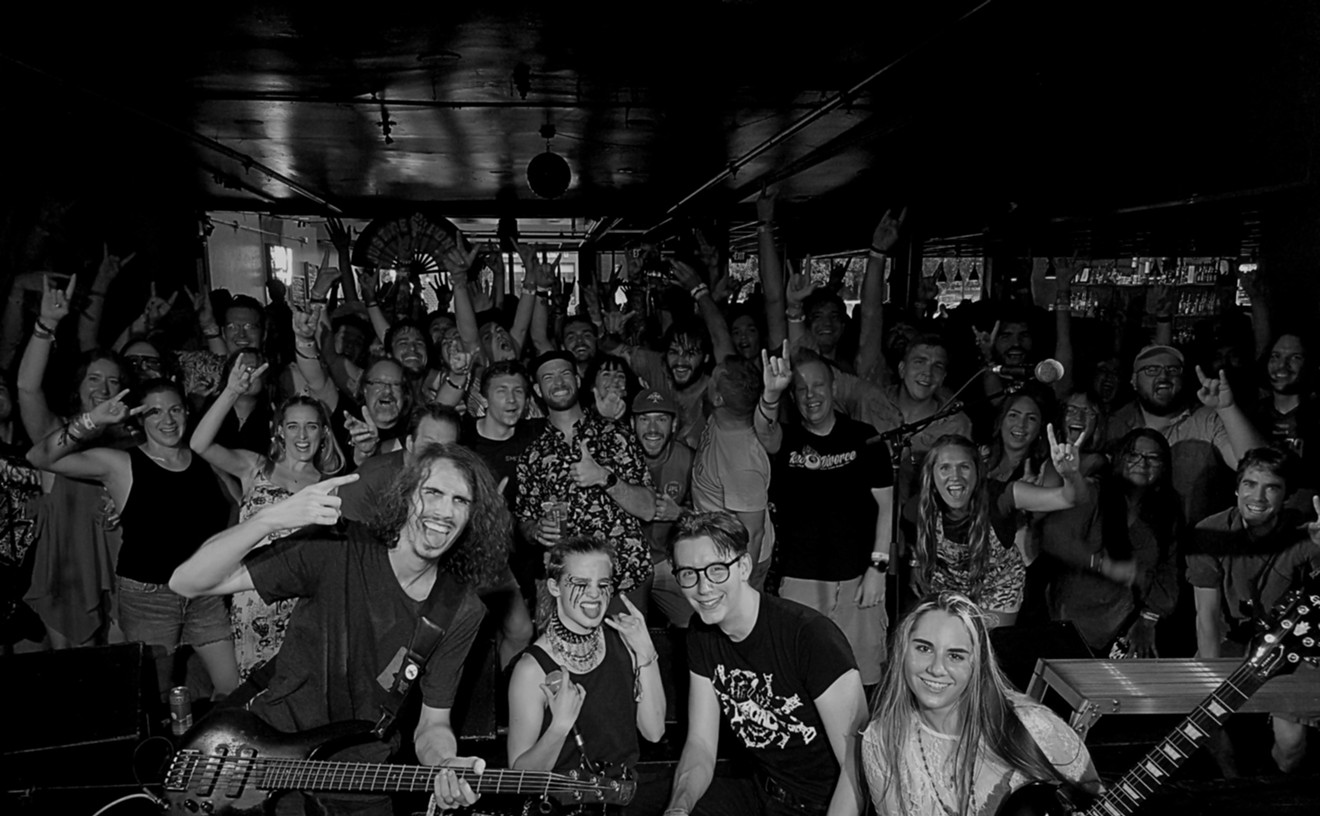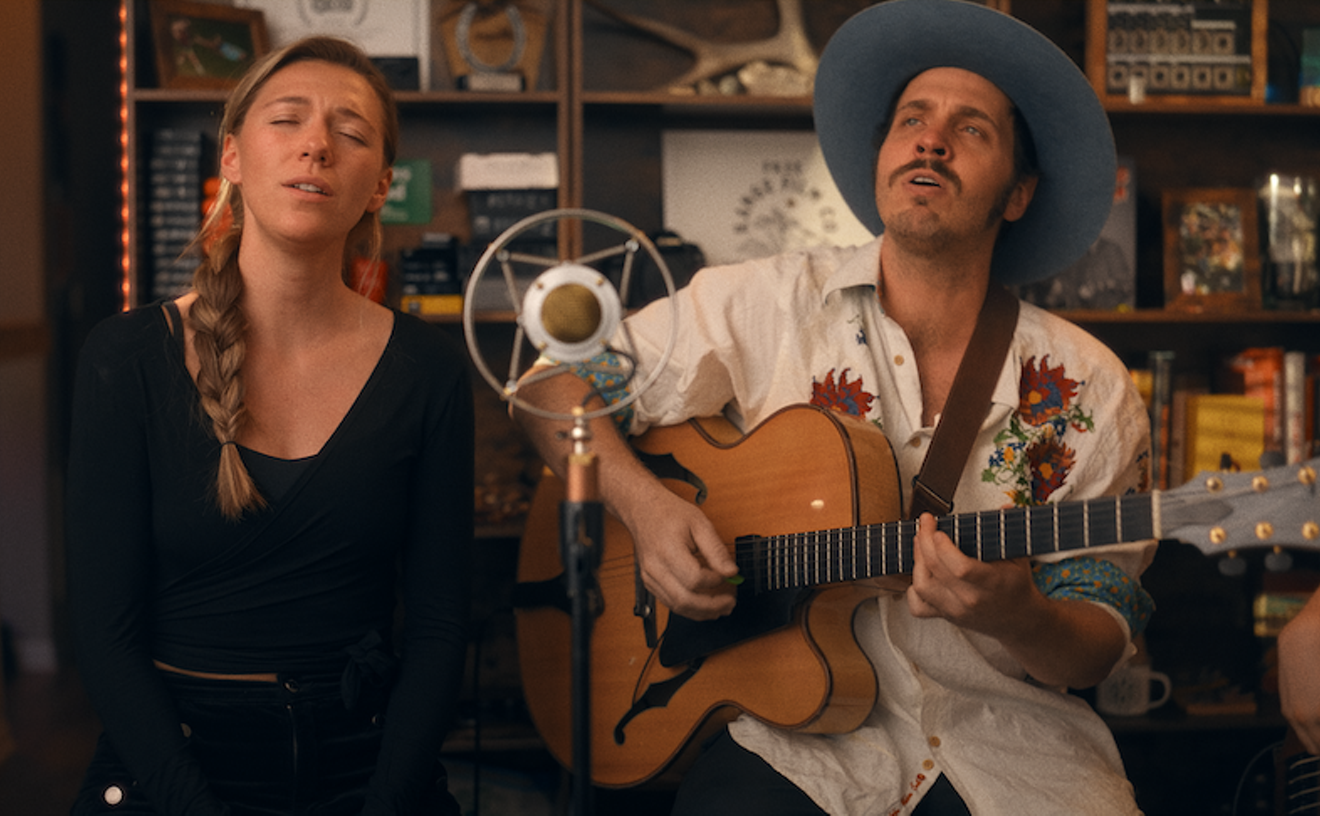See also: A Butt-Level View of Music Festival Fashion
The Gothic Theatre is one of the "accessible" venues. You don't need to go up any steps to get inside, and the first floor is easy to navigate: Ramps run along the sides of the room, allowing anyone to reach the foot of the stage or any of the standing-room tiers with relative ease. The front doors of the venue are always wide open during a show, and there is a large, accessible, unisex bathroom serving the ground level.
Heffernan arrives at the Gothic early on a night last November to see the hip-hop duo Run the Jewels. The line moves quickly, and Heffernan is inside within minutes. The place is buzzing with people, the usual scene at a nearly sold-out show: Strangers stand shoulder-to-shoulder, inching through the space.
But most people don't notice Heffernan, making it hard for her to get anywhere. And any attempt to ask people to move out of her way is drowned out by the booming bass coming from the P.A. system. There is no dedicated space for a person in a wheelchair to sit and enjoy the show with a clear view, so she spends its duration staring into a world of other people's butts.
The Gothic isn't the only venue at which people like Heffernan get a hopelessly substandard experience. In fact, it's the norm. Two of her friends, Stacey Hendricks and Teresa Nguyen, share similar stories. They both use wheelchairs, too.
"I think there's a gap with language, unfortunately," says Nguyen, a disability activist who is working on her master's degree in public health. "Accessibility isn't really defined; it's defined differently for everybody. I've called venues ahead of time, and they say, 'Oh, yeah, we have no steps inside' -- but they have a step outside that they forget about. They'll say, 'We're accessible; we have an elevator,' but then the question is, 'Can I get to the elevator?'"
Making the concert experience accessible isn't a matter of solving one problem or implementing one set of guidelines. Instead, the people designing and operating venues (and, in fact, most public spaces) need a new mindset -- one that genuinely includes a wider range of people.
"What we need is so dependent upon the situation and the place," says Hendricks, who works at the Museum of Contemporary Art Denver. "Together, we all have a lot of fantastic ideas, and that doesn't mean venues would have to change a lot of things."
"Disability is such a crazy, big thing," adds Heffernan. "There are visually impaired people who may need to be closer to the stage, but they may not need to be higher up. Then there are behaviorally disabled people, who may need to be somewhere with less sensory overload. Then there's us. An option where disabled people can sit would change so much," says Heffernan.
"I think there's a stereotype about people with disabilities not being out as a community," says Nguyen. "People don't see a need to serve our community, but it's because they just don't see us."
For now, the three music fans just have to work with the setups that are in place. It requires a lot of planning, a lot of patience and some good luck. "We buy tickets to concerts just like anyone else, but we don't have the same experience," says Hendricks. "That's not anyone's fault, but it sucks." At a venue like the Bluebird Theater, for example, there are temporary ramps that can be put out that allow wheelchairs to get all the way to the stage, but once you're there, you're essentially stuck. Someone has to notify staff when a person in a wheelchair is ready to leave, or use the bathroom, or go to the bar, or visit the merch table or anything else. There are safety concerns, as well: What happens in an emergency when the venue must be quickly evacuated?There are also issues with crowd behavior, something venues have little control over. Heffernan and her friends must also deal with the possibility of getting knocked over or having another concert-goer fall on them -- both of which could have serious health or liability implications, depending on the circumstances.
All three women use large, cumbersome electric or "power" chairs for most of their daily routines. The bulky chairs can be used to push inaccessible doors open and generally make it easier to get around. They also offer some stability in crowds, but it's often not enough for the concert environment. "Even if I wanted to be up front at a show, it wouldn't be safe," says Heffernan. "Shows get too rowdy."
Dedicated areas for people with disabilities don't always solve the problem, either. They're often small, leaving people who need them with no choice of vantage point. And able-bodied concert-goers often fill the spaces or block them, anyway.
Heffernan enjoys going to Red Rocks Amphitheatre, where a security guard used to make sure that she got a spot among the designated wheelchair-accessible seats in the front. But he no longer works there, and she finds that those spots are almost always filled with able-bodied fans, forcing her to go to Red Rocks' only other accessible seating -- at the top of the venue, in the very last row -- where her height ensures that she won't see much of anything.
The layout of accessible seating also often ignores the possibility that someone who needs it might also be social. "Even if you have an accessible seat, you have a maximum of one or maybe two friends that can be with you," says Hendricks, "so our friend limit is also capped."
Then there are issues with transportation. The three women say that taking the bus is generally the way they get around, but if a concert gets out too late, they can end up stranded at a venue. RTD's Access-a-Ride service is also an option, but it runs during regular bus-route hours and must be scheduled two to three weeks in advance. In short, nothing about going to a concert is easy.
"If you let it, it will kill you," says Heffernan. "There are plenty of disabled people who just don't go out, hate their lives, are super-depressed, and their only outlet is Facebook. I mean, I totally get it."
After the Run the Jewels show, Heffernan wants to stop by the merch table and say hello to El-P, one half of the headlining act; she's met him a time or two in passing. But the merch counter is so tall that El-P doesn't see her. She does her best to shout a hello to the MC, but he comes out from behind the massive wooden barricade and breezes right past her.
Heffernan sighs and makes a joke about the situation. It's clear that this happens all the time. Even with a neon-green wheelchair weighing over 300 pounds as her flag, she is often invisible.
• BACKBEAT'S GREATEST HITS •
- 50 Photos That Prove Red Rocks Is the Most Beautiful Venue on the Planet
- Photos: Musicians Buying (Legal) Weed in Denver
- The Ten Most Underrated Guitarists in the History of Rock
- 50 Ways to Support Your DIY Music Community
Follow @Westword_Music











